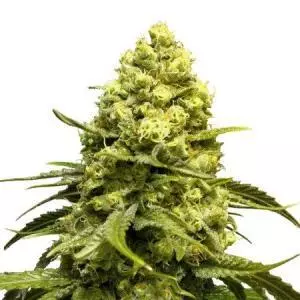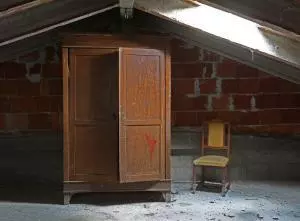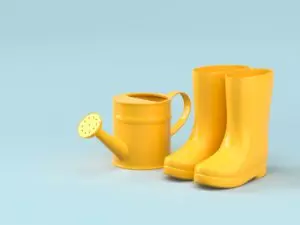Would you want to increase your marijuana yields and enhance the quality of your cannabis plants? You must have heard about marijuana fimming and topping, particularly if you aren’t a novice weed cultivator. Fimming and topping are the most popular cannabis cultivation techniques among cannabis growers today. These two cultivation methods can potentially guarantee growers high yields once implemented properly. They are potentially the secret to getting a bumper yield.
Nonetheless, some growers prefer fimming over the usual topping method. They think the former is much better and effective than the latter. Although the debate over which method is better than the other has gained momentum in recent years, it is worth noting that the two have their advantages and shortcomings, just like other horticultural methods.
Therefore, growers have to understand the two, how they work, their benefits, and when to use them before deciding, which technique to leverage in their weed farming methods. Continue reading to learn more about filming and topping, and to help you decide whether fimming is the way to go.
What exactly is fimming?
Fimming refers to a marijuana cultivation technique that encourages increased lateral growth, bushy growth, and flowering of cannabis strains. It is the short form of the infamous term F**&K I Missed. A grower who accidentally missed some important steps when topping his plants coined the term. Interestingly, his mistakes paid off after discovering the technique that is today implemented by dozens of marijuana growers.
Fimming is quite similar to topping since the two work by cutting plants to manipulate their yields. But the two methods’ difference lies in how they are executed. For the topping, it is about eradicating new growths on plants by cutting between their nodes. But for fimming, involves the elimination of a part of the cannabis plant’s main stem. The idea behind this method is to promote the growth of multiple colas while making the plants bushier.
It is perfect for small-scale growers. It also produces more colas without causing too much stress to the plants. On the other hand, topping is ideal for experienced weed growers with plenty of growing space at their disposal. The cultivation technique is ideal for controlling the shape of the plants and for producing prettier plants.
What benefits does it have over topping?
Compared to topping, fimming produces more colas. Therefore, the method is suitable for small-scale growers striving to get the largest yields possible from out of their strains. It also doesn’t cause too much damage to the plants, unlike topping. Strains that have undergone fimming become bushy faster compared to their topped counterparts. When handling mother plants, fimming produces better clones. These clones are more abundant and result in slower growth for growers to choose from. It explains why some growers confuse the method with super cropping. Fimming works great with a wide array of cannabis strains instead of topping, which works on some selected strains.
Fimming involves stopping top growth on the cannabis plants, thus revealing hidden growth sites on the plants. It thus encourages the plants to put more energy into them, eventually accelerating growth. With fimming, plants don’t focus on the overall growth but concentrate more on using energy to grow multiple colas. After fimming, the lower growth nodes are converted to new colas upon exposure to air and light.

Is fimming better than topping?
While most growers will choose either topping, fimming, or any other method, there are instances when fimming is more effective than other methods. For instance, fimming is suitable for growers with smaller grow rooms. Some Sativa strains can become tall hence competing for light particularly when they are too close to each other.
Fimming is recommended in such instances. It discourages the plants from becoming excessively tall, thus overlapping each other. Overlapping can deny shorter plants exposure to light, particularly when growing in areas with limited exposure to light.
Fimming offers a tangible solution to this problem. It ensures the plants grow in width instead of growing lengthwise. After fimming, you can trim your plants a bit to produce a beautiful blanket.
The other reason for choosing fimming over topping is that it reduces unwanted leaves on your plants. Such leaves can’t absorb light, and hence they are unwanted. The results of fimming are precisely leaves than can trap light effectively.
Once all the leaves on your plants can absorb light effectively, it means your plants will produce more yields. The quality of the yield will too improve dramatically.
Finally, fimming can lower your plants’ risk of producing fewer buds, giving the method an added advantage over topping. Growers are assured of more main buds with fimming than with topping, since the buds produced aren’t that large, and hence they are at lower risk of diseases such as bud rot.
Fimming is preferred among outdoor growers because outdoor plants are more susceptible to nasty diseases than their indoor counterparts.
What are the downsides?
Yes, there are, the same way there are demerits with any weed cultivation method or horticultural practice. For example, fimming affects negatively on auto-flowering cannabis strains. The stress occasioned by the method, although minimal, can ruin some strains permanently or retard their growth.
Fimming forces growers to keep their plants in the vegetative phase for several weeks. Some growers find this duration too long for them to wait. When the plants have reached the bloom phase upon fimming, it is daunting for growers with space constraints to maintain their grow space.
It calls for such growers to include additional techniques to keep their grow space organized.
While fimming leads to more buds, these buds can be too heavy for the plants to handle the extra weight. If the plants are strong enough though, they can comfortably handle the weight without collapsing.
Despite the demerits of fimming, it remains a great technique for promoting larger yields. Simply put, the technique’s downsides are fewer compared to its advantages. Plus, growers can manage these downside to achieve their desired quality and quantity of weed.
Guide on fimming your plants
With fimming, growers focus on removing the newest shoots of their plants. It results in four buds other than a single bud. The plants get lower and wider than the topped ones. Besides, the leaves are more exposed to light than their topped counterparts.
The additional exposure translates into the leaves absorbing more light. While fimming damages the plants a bit, not to a wider extent like topping. Plants can induce recovery much faster after trimming than when they are topped. Use this guide for fimming your plants.
- Select the top growth in every single plant in your to grow space or garden. The growth is visible on the end of the stems or branches.
- Remove the top growth of your plants. Here, you can use the snipping method or the pinching method. Snipping entails using scissors, razor blades, or shears. Pinching, on the other hand, entails pinching off the top growth using your fingertips. Since the risk of damaging your plants while fimming is low, you can use either method provided you utilize it effectively.
- Make sure to remove at least 75 percent of the growth. Here you can either make a clean cut to form a clear bowl-shaped cut or bend the tip of each plant between your fingers to form a curved shape.
When should I try fimming on my plants?
Fimming can’t be done all the time, like with other techniques used for generating high yields. Simply put, there are some times when fimming is recommended or discouraged for various reasons. It is effective when implemented during vegetative growth.
When you remove parts of the plants when fimming, your plants will be affected, and therefore they need sufficient time to recover. It explains why growers should consider fimming before the onset of the flowering season.
Fimming can still be implemented on infant plants or plants that are emerging from the seedling stage. It helps the plants to grow like bushes.
Nonetheless, fimming at this stage should be done with other techniques such as LST. It works only work for experienced growers. Their novice counterparts are discouraged not to try fimming alongside other techniques lest they ruin their plants altogether.
Depending on the region, fimming is the best and most effective when the plants are at least 30 cm tall. This height is mostly recommended among European growers. Overly, give your plants at least 3 to 4 weeks before fimming them.
At this stage, the plants will be stronger enough to withstand the changes done by fimming, and to recover faster. Don’t rush the process. Implement it anytime your plants enter the vegetative phase or after they have matured.
Can fimming be done in combination with other techniques?
Fimming can be combined with other techniques for maximum yields. Below are the techniques that growers can combine with fimming to boost their cannabis yields.
- Low-Stress Training (LST) – this technique entails boosting cannabis yields without subjecting them to stress how fimming or topping does. When combined with fimming, the technique can help increase the light exposed to your plants, helping them synthesis more nutrients faster.
- Lollipopping– the technique is one of the best to combine with fimming. While fimming focuses on reducing top growth on the cannabis plants, the technique entails trimming the plants’ bottom. The plants will consequently direct more energy to the upper branches. When combined, the two techniques will further enable the plants to direct energy to future flower sites.
- Super cropping- The method works well with fimming, especially when some plants need additional fimming. Instead of performing additional fimming, you can try super cropping. Here, you won’t do any trimming, meaning you won’t be risking stressing your plants. With this technique, you can easily increase the plants’ growth, strength, and yields.
- Monster cropping– the technique works wonders with fimming. It can double the buds produced by your plants upon fimming. Each plant will have multiple heads, translating to larger yields.
Are there some cannabis strains that work particularly good with fimming?
Fimming may not work well with all strains. Some strains, however, work great with fimming, and yet they do poorly with topping. The stains below are excellent candidates for fimming.
- Aurora Indica– This strain breaks, bends, flourishes, and recovers effortlessly, making it a worthy candidate for fimming. The technique is easy with this strain, for inexperienced growers can even perform it.
- PPP (Pure Power Plant) – being super resilient and highly potent, the plant has every attribute to make it a suitable candidate for fimming. Better still, it produces an amazing quality of potent buds.
- Wonder Woman– The strain boasts superb growth patterns. When fimming is done on the plant, growers can get high yields more than any cannabis cultivation technique. It recovers superfast, making the plant a perfect candidate for fimming.
Extra tips for cannabis growers
Fimming should be implemented in the right way to give growers their desired results. The tips below can help growers, particularly beginners, to perform fimming properly on their plants.
- Don’t perform fimming too early. It will make it difficult for your plants to recover.
- Use clean equipment while fimming to avoid infections on your plants.
- Don’t perform fimming during the flowering stage. The method only produces great results when conducted during the vegetative phase.
- Do fimming when your plants show signs of rapid growth, such as growing leaves faster than usual. Your plants will recover noticeably faster when they are experiencing rapid growth.
Most made mistakes
Fimming can go wrong when growers make these mistake_
- Fimming too early
- Combining fimming with the wrong technique
- Fimming the wrong strains that can’t make large buds
- Removing excess plant growth

Other methods to increase the yield of your cannabis plant
Now you know what fimming entails. Now, let’s delve into topping and see how the cannabis cultivation method works. Finally, you can judge whether which method is better.
What does topping entail?
It entails cutting the upper portion of the marijuana plant for purposes of stunting vertical growth. With this method, the objective is to initiate lateral growth towards the branches on the base of the marijuana plants. Topping is implemented to achieve healthy plants and produce quality yields. Upon topping, the plants’ growth hormones are distributed evenly towards the lower portion of the plants, enabling the smaller branches on the side of the plants to grow bigger, hence forming large buds.
Why should I consider topping my plants?
Topping aids with redistributing the growth hormones from the cannabis plant’s main stalk to the secondary stalks at the base of the plant. Other than distributing hormones to the right places, topping can enable you to maximize your growing space—the method help with decongesting your cannabis canopy, leveling it, and making it superbly organized.
The main reason for topping is to promote bulk yields, particularly when cannabis is being grown outdoors. It successfully boosts yields by helping the leaves and branches of the cultivated marijuana plants to access light.
When plants have an abundant light source, they synthesize nutrients much faster and effectively, providing them with steady source nutrients to assist them in producing large yields. Experienced and novice growers can perform topping.
Topping is particularly suitable for plants that are exposed to little light. More importantly, the method works well for those with large, growing spaces.
Which is the simplest way of topping my cannabis plants?
Topping is easy, just like fimming. To start the procedure, ensure your plants are strong enough. If there aren’t, topping will only stress them. To tell whether the plants can handle the changes occasioned by topping, examine the leaf nodes, and ensure they are about five leaf nodes.
If the plants are mature enough and ready for topping, cut the plants slightly below the leaf last leaf node. Since topping needs precise cutting, use sharp for cutting. The scissors must be thoroughly cleaned and sterilized to kill any bacteria, germs, and other harmful microorganisms that could infect the plants.
Select suitable spots for cutting your plants, preferably on the newest growth on the main stems. Remove the growth from the plants. Two new branches will sprout from the spots you cut.
Continue checking the plants daily to monitor their recovery progress. For plants grown outdoors, a plant sealing paste should be used for sealing the spots where cuts were made. When cuts are made on outdoor plants and left unsealed, the plants could get an infection from the air’s bacteria and fungi.
Can I use topping in combination with other marijuana growing techniques?
Topping is more efficient when used with some less-detrimental methods. While it can’t work with many methods, some super cropping methods work superbly great with it. These two methods can amazingly improve yields. LST can still be combined with topping and working great, although growers don’t have to top their plants to combine it with LST.
What are the shortcoming of topping?
Of all the cannabis growing methods, the topping method is the cheapest one. Nonetheless, it increases the cost of caring for your plants. Plus, it is more stressful on the plant since it advocates for removing some parts of the stem. The risk of causing permanent damage to your plants is high when performing topping.
Notwithstanding these shortcomings, topping still guarantees growers huge yields when implemented properly. For experienced, large-scale growers, the procedure can dramatically boost their yield in the long-run.
Therefore, use this method only if you can implement it successfully; otherwise, your plants will suffer.
When is the perfect time for growers to utilize topping?
On average, the perfect time for growers to use this decades-old weed growing method is when the cannabis plants have the right number of nodes. Growers need to wait for their cannabis to have at least seven nodes before topping.
Plants recover much faster when they have more nodes. The more nodes a cannabis plant has, the larger its photosynthesis area. As such, plants are better placed to generate more nutrients when they have several nodes.
For micro-growers or those growing plants on pots, a sure indication that their plants have matured and ready for toping are the roots. Once the roots have started appearing on the pot’s base, it signifies time is ripe for topping.
Early topping is discouraged, for it potentially kills the plants. Alternatively, it stunts their growth, eventually countering their growth progress. Nonetheless, a couple of strains can’t be affected by early topping. The deciding factor here is the type of strain you plan to top. Through research, find out whether your strain can withstand early topping.
So which is the best method between topping and fimming?
Several factors have to be considered by growers before deciding which among these methods is good. First, growers have to consider both their benefits and shortcomings. For instance, fimming can be better than topping if you are a small-scale or indoor grower. It allows you to maximize your plant yield in this case.
Topping can be better than fimming based on the growers using it. For instance, the method though stressing plants is a nice option for outdoor and large-scale growers. For these cannabis growers, topping produces large, busy plants that can be topped several times. In a nutshell, none of these two techniques is better than the other. It simply has to do with individual preferences, coupled with the grower’s needs.
Conclusion
So is fimming better than topping? Now the answer is clear. Despite this being a heated debate among growers, fimming can’t be any better for some growers. They have their reservation with the cultivation technique going by their choices, needs, and experience.
All the same, fimming and topping can differentiate between getting dismal yields and harvesting a huge quantity of cannabis. Nonetheless, many factors determine the outcome. All these methods have to be utilized correctly. Missing a step can be disastrous to your plants. Utilize whichever method you perceive suitable for your growing needs and leverage it for optimum benefits.
Frequently Asked Questions
Is topping or fimming better?





